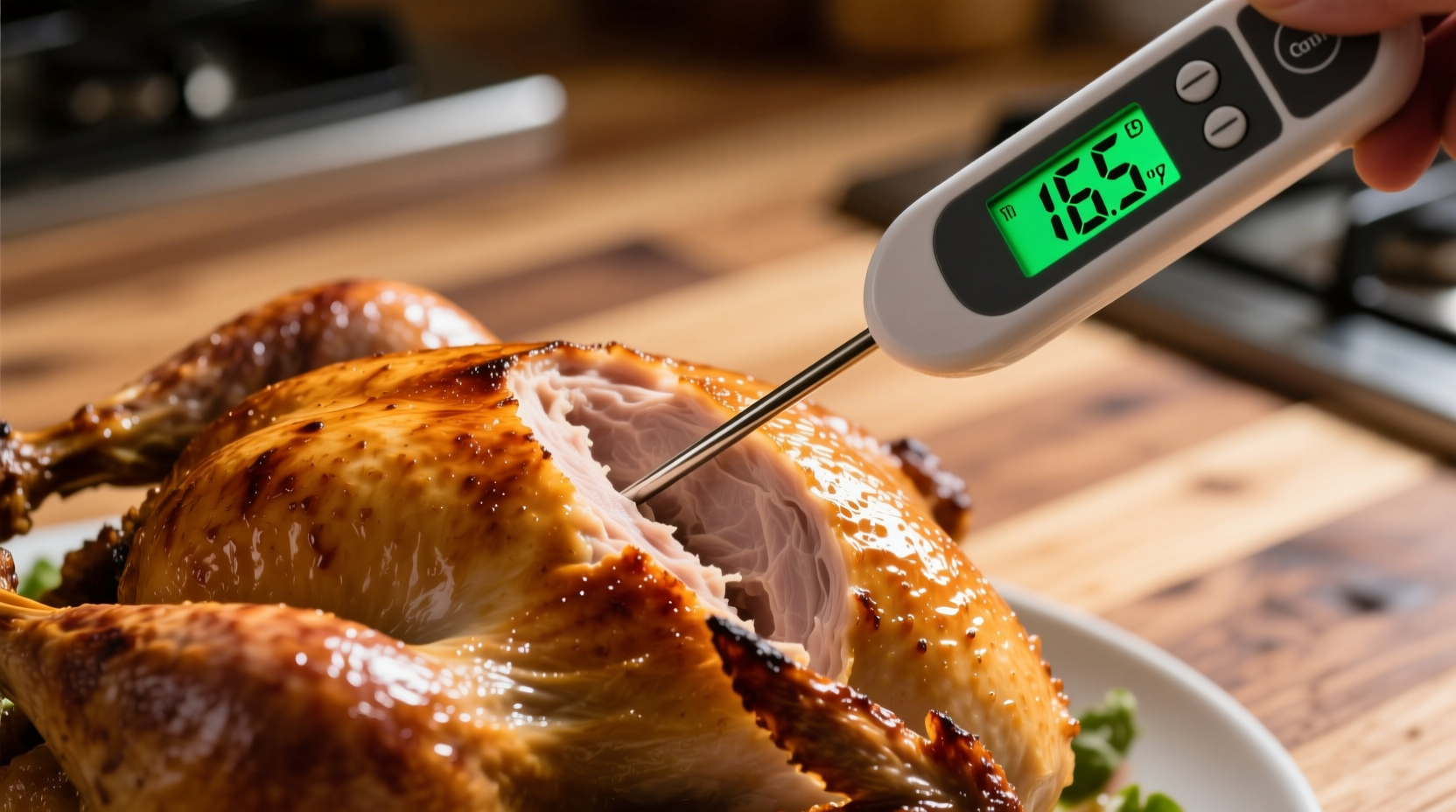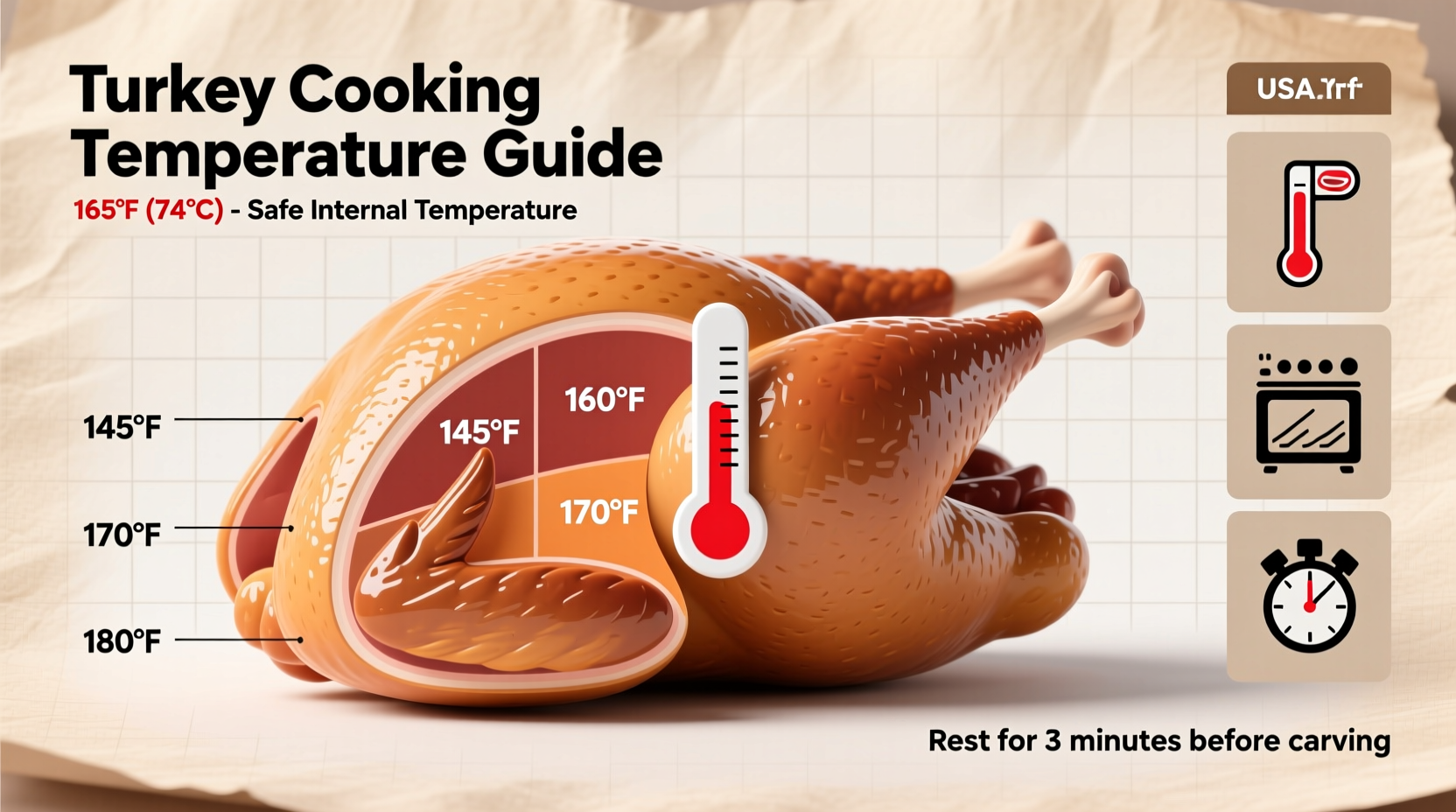Nothing ruins holiday celebrations faster than foodborne illness from improperly cooked turkey. Getting the temperature right isn't just about perfect texture—it's a critical food safety requirement that prevents dangerous bacteria like Salmonella and Campylobacter from making your guests sick. In this guide, you'll learn exactly where, when, and how to check your turkey's temperature for guaranteed safety without sacrificing juiciness.
Why 165°F Is the Non-Negotiable Safety Standard
When you're preparing a centerpiece turkey for your family, understanding the science behind the temperature recommendation transforms you from a nervous cook to a confident host. The USDA's Food Safety and Inspection Service (FSIS) established 165°F as the minimum safe temperature because this specific heat level instantly destroys harmful bacteria that commonly contaminate poultry.
Unlike vague "cook until done" instructions from decades past, this precise measurement eliminates guesswork. At 165°F, Salmonella bacteria—responsible for 1.35 million illnesses annually in the US—are eliminated in less than 10 seconds. Lower temperatures require exponentially longer cooking times to achieve the same safety level, which isn't practical for large birds.
| Temperature | Time to Eliminate Salmonella | Practical Implication |
|---|---|---|
| 150°F (65.6°C) | 3.5 minutes | Requires precise temperature maintenance throughout bird |
| 155°F (68.3°C) | 47 seconds | Still risky for unevenly cooked large turkeys |
| 160°F (71.1°C) | 14.8 seconds | Not recommended for whole turkeys |
| 165°F (73.9°C) | Instant | USDA standard for foolproof safety |
How Temperature Guidelines Have Evolved
Food safety standards for poultry cooking have changed significantly as our understanding of bacterial destruction has improved. This timeline shows how science has refined our approach:
- 1970s-1980s: Recommendations focused on visual cues like clear juices and leg movement
- 1990s: Introduction of 180°F standard based on early thermometer technology
- 2006: USDA lowered recommendation to 165°F after research showed equivalent safety at lower temperatures
- 2011: Current standard formalized with emphasis on proper thermometer use
This progression reflects improved scientific understanding of bacterial death rates at various temperatures. The current 165°F standard balances safety with moisture retention—higher temperatures risk dry, overcooked meat.
Where and How to Measure Temperature Correctly
Even with the right target temperature, improper measurement leads to unsafe or dry turkey. Follow these professional chef techniques for accurate readings:
- Use the right thermometer: Instant-read digital thermometers (like ThermoPro or Thermapen) provide accuracy within ±0.5°F. Avoid dial thermometers that require 15-20 seconds to stabilize.
- Target the critical zones: Insert probe into three locations:
- Thickest part of breast (avoiding bone)
- Innermost part of thigh (near joint)
- Where stuffing meets meat (if stuffed)
- Avoid common errors: Don't touch bone (reads higher), don't measure near cavity stuffing (reads lower), and take multiple readings as temperature varies across the bird.

Temperature Carryover and Resting Time
Many home cooks make the critical mistake of removing turkey too early because they don't account for carryover cooking—the continued temperature rise after removal from heat. During resting:
- Temperature typically rises 5-10°F
- Juices redistribute for moister meat
- Final safe temperature is achieved without overcooking
Remove your turkey from the oven when the breast reaches 160-162°F. During the mandatory 20-30 minute resting period (required by USDA for food safety), the temperature will climb to the safe 165°F threshold while keeping the breast meat perfectly juicy.
Special Considerations for Different Turkey Preparations
While 165°F remains the universal safety standard, different cooking methods require nuanced approaches:
- Brined turkeys: Salt penetration can lower perceived doneness temperature—still verify 165°F internally
- Smoked turkeys: Low-and-slow smoking requires extended time at 165°F to ensure safety throughout
- Deep-fried turkeys: Temperature must reach 165°F in all parts within minutes of cooking completion
- Stuffed turkeys: Both turkey AND stuffing must reach 165°F (stuffing often lags behind)
Troubleshooting Temperature Issues
When your turkey isn't reaching temperature as expected, these solutions maintain safety without ruining your meal:
- Problem: Breast hits 165°F but thighs are below 160°F
Solution: Tent breast with foil and continue cooking, checking thighs every 10 minutes - Problem: Turkey finished but internal temperature below 160°F
Solution: Return to oven immediately—do not serve undercooked poultry - Problem: Overcooked despite careful monitoring
Solution: Use carryover cooking more strategically next time; remove at 160°F for breast
Leftover Safety: The Critical 2-Hour Rule
Your food safety responsibility continues after the meal. The USDA requires that cooked turkey must not remain at room temperature more than 2 hours (1 hour if room temperature exceeds 90°F). Bacteria multiply rapidly between 40°F and 140°F—the "danger zone" where pathogens double every 20 minutes.
Properly stored leftovers maintain safety for 3-4 days in the refrigerator or up to 4 months frozen. Always reheat to 165°F before serving.











 浙公网安备
33010002000092号
浙公网安备
33010002000092号 浙B2-20120091-4
浙B2-20120091-4